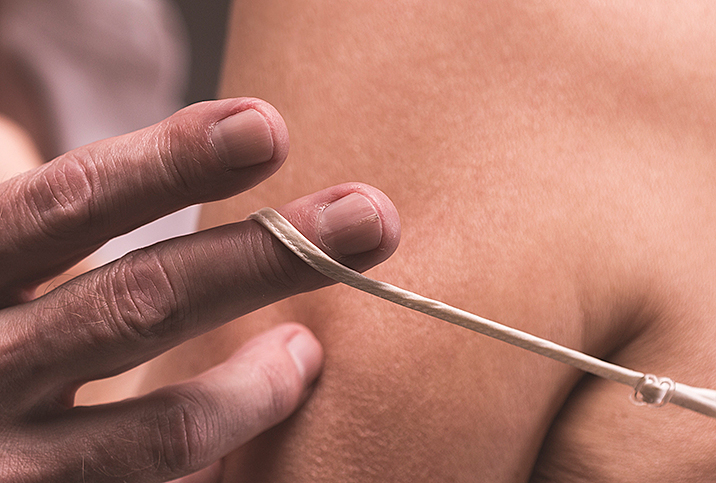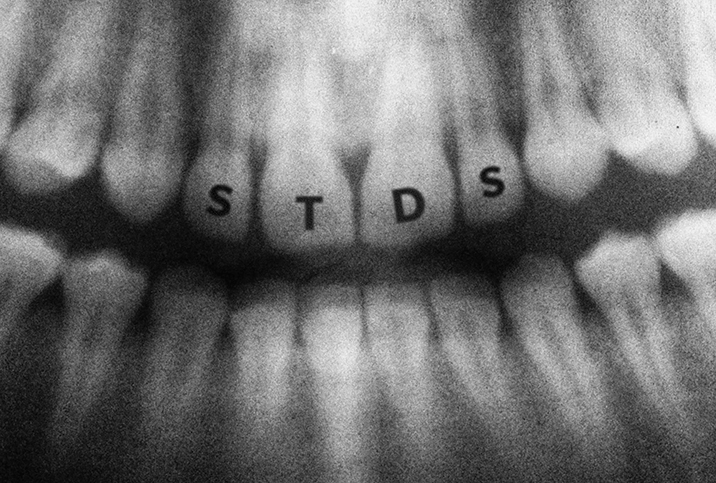An Essential Guide to Sexually Transmitted Diseases and Infections

Sexually transmitted diseases (STDs) are generally acquired through sexual contact. Viruses, bacteria and parasites cause these diseases and may pass from person to person in blood, semen and other bodily fluids.
If you are sexually active, you can have or transmit a sexually transmitted disease without even knowing it since they are highly contagious. Regular STD screenings are recommended if you have an active sex life.
People are reluctant to discuss the subject, but STDs are serious medical issues that require professional treatment. While some sexually transmitted diseases can be cured, others have no cure and could be life-threatening without treatment.
What's the difference between an STD and an STI?
The acronym STI stands for sexually transmitted infection. You'll often see STD and STI used interchangeably, but they are different. Think of an STI as a nameless infection before it is diagnosed as a specific disease with symptoms, which means it can be named as a sexually transmitted disease.
The World Health Organization (WHO) recommended using the term sexually transmitted infection in 1999. The goal was to use a more inclusive term to describe infections that could be diagnosed and cured before they became diseases. STI provided a way to refer to a condition that many people find unpleasant or embarrassing without mentioning the stigma of a sexually transmitted disease.
All sexually transmitted diseases begin as infections. However, some STIs never develop into STDs. Human papillomavirus (HPV) is a good example; it typically clears up without causing health issues in nine out of 10 cases within two years.
If the infection does not clear on its own, it can lead to genital warts or cervical cancer. At that point, the condition would be diagnosed as a specific disease.
What are the risks and causes of STDs and STIs?
Anyone sexually active is at some risk of exposure to STIs. Using condoms improperly or inconsistently also increases your risk.
"Multiple sexual partners always is a big risk factor. That's probably number one," said Paul Pavlov, M.D., a family physician at North Bay Family Medical Clinic in Biloxi, Mississippi. "Unprotected sex is number two."
Oral sex can be less risky, but infections can still be transmitted even if you're using latex condoms or a dental dam, a thin square piece of rubber made from latex or silicone.
A history of sexually transmitted infections is another risk factor. If you have or have had one STI already, it's easier for another one to take hold.
Misuse of alcohol and recreational drugs is a risk factor because substances can inhibit judgment.
Injecting drugs and sharing needles can spread various infections, including HIV and hepatitis B and C. There is a small risk of infection from getting a tattoo or a piercing, so make sure you check out any facility's cleanliness and processes.
How are STDs and STIs spread?
Sexually transmitted infections are acquired through sexual contact and come from bacteria, viruses or parasites. They can pass from person to person via blood, semen or other bodily fluids. Treatments are available if the infection is detected early.
Once an STI has become a sexually transmitted disease, it can still be cured. That's true even for STDs such as chlamydia, gonorrhea, syphilis and trichomoniasis. Again, treating the disease early is best, and doctors recommend getting screened and tested regularly to suppress the spread of STIs.
The Centers for Disease Control and Prevention (CDC) recommends getting tested at least once a year for chlamydia, gonorrhea and syphilis. If you have multiple or anonymous partners, the CDC recommends getting tested more frequently, such as every three months.
"If you're the anal receptive partner, you're just at higher risk for contracting anything because it's a more vascular region. Just like if you are having heterosexual intercourse, the female is more at risk of contracting something than the male. It's just the anatomy," said Sara Moskowitz, A.P.R.N.-C., a nurse practitioner at New York University Langone's Preston Robert Tisch Center for Men's Health in New York City. "I always like to stress, if you had chlamydia, gonorrhea or syphilis, as easy as it is to get those, it's as easy to get HIV, which is why it's so important for those patients who are high risk to be on PrEP."
Pre-exposure prophylaxis (PrEP) is an anti-HIV medication that reduces a person's chance of getting HIV from sex or injection drug use.
"Sexually transmitted infections can absolutely travel together," Moskowitz said. "If you're vulnerable enough to get an STI, there's no reason you couldn't have contracted HIV."
What are the stages of syphilis infection?
Syphilis is one of the more serious STDs, so it's worth taking time to focus on it, especially since a 2022 CDC report noted that cases of the disease increased by 80 percent over the previous five years.
Syphilis has four stages—primary, secondary, latent and tertiary—and each presents different signs and symptoms. The primary and secondary stages of syphilis are often treatable with oral antibiotics.
"When we get to tertiary syphilis, when there are more neurological signs and symptoms, that needs to be handled a little more aggressively," said Renee Trewella, B.S.N., a registered nurse in Baton Rouge, Louisiana.
If a syphilis test comes back positive, it's important to get treatment started.
"How much we treat them depends on when their last syphilis test was," Moskowitz said. "If they've had a positive syphilis test within the past year, then they need treatment with just one shot of penicillin. If there's no syphilis test within the past year and they're now showing positive—meaning that this could be what's called latent syphilis—then they get three injections of penicillin one week apart."
Moskowitz also noted that the type of syphilis someone has can depend on their symptoms.
"If someone has any sort of neuro symptoms, they could have neurosyphilis—an infection that affects the coverings of the brain, the brain itself or the spinal cord," she said. "Sometimes, I'll send them to the hospital for IV antibiotics for that. But that's pretty rare."
Facts, stats and studies about STDs and STIs
Cases of major STDs in the U.S. were mixed, according to the CDC's 2020 STD Surveillance Report, which was released in 2022:
- 1.6 million cases of chlamydia were reported, a 13 percent decrease from 2019.
- 77,769 cases of gonorrhea were reported, a 5.7 percent increase from 2019.
- 133,945 cases of syphilis were reported, up 6.8 percent from 2019.
In 2020, 53 percent of the reported cases of STIs were among adolescents and young adults, ages 15 to 24, according to the CDC.
More than 1 million sexually transmitted infections are acquired every day worldwide, a majority of which are asymptomatic, according to the World Health Organization. Globally, an estimated 374 million new infections of chlamydia, gonorrhea, syphilis and trichomoniasis occur every year.
More than half a billion people worldwide between the ages of 15 and 49 are estimated to have a genital infection with herpes simplex virus (HSV).
Human papillomavirus (HPV) infections are associated with over 300,000 cervical cancer deaths every year.
The bottom line
If you or your partner thinks you may have a sexually transmitted infection, get a diagnosis from your healthcare provider and receive immediate treatment. If you do have an STI, put the stigma to one side and talk to your partners about your diagnosis so they can receive treatment, too.
If you plan on having sex before your treatment is complete, you must use protection, such as a condom.


















